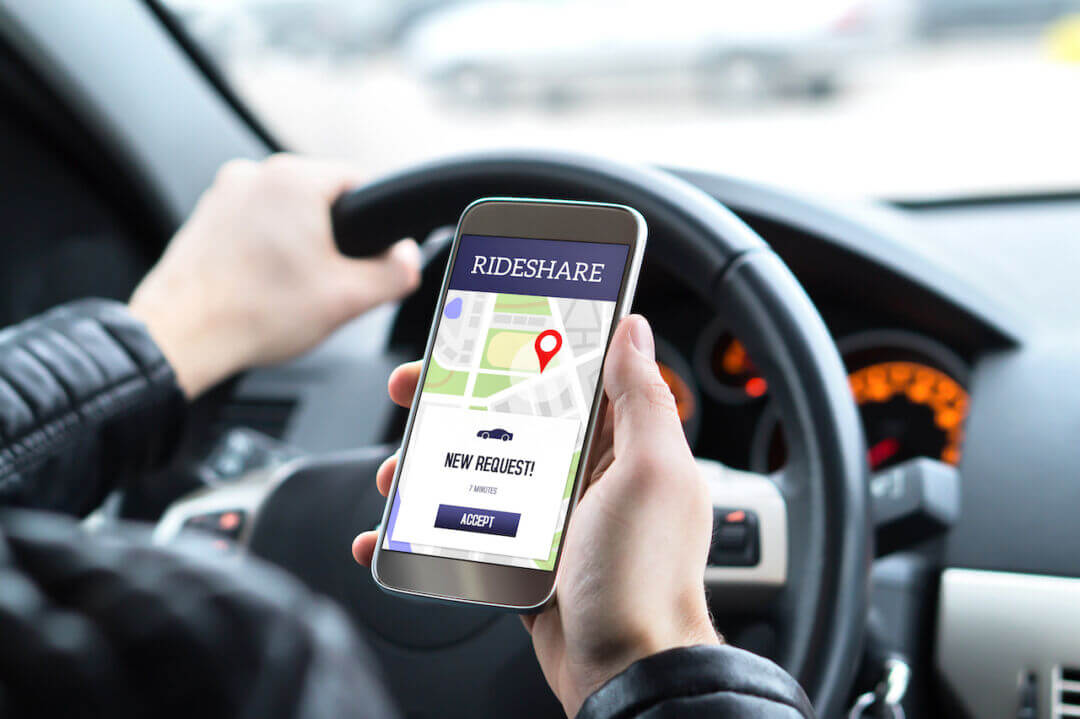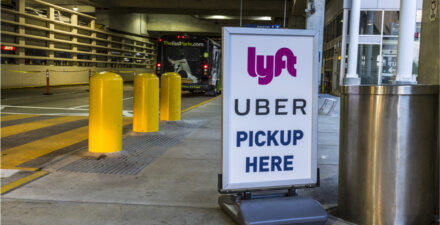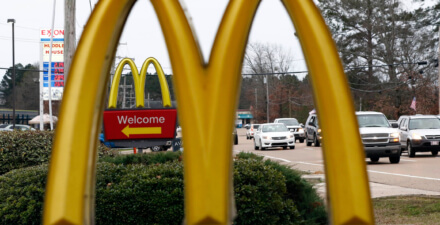New evidence on the success of gig-worker pay standards for ride-hail drivers

The misclassification of work performed by ride-hailing drivers is rampant in the online platform-based gig economy. Companies such as Uber Technologies Inc. and Lyft Inc. claim their drivers are independent contractors, despite Uber and Lyft setting prices and exercising an extreme degree of influence and control over their drivers’ actions. These gig workers can exercise some degree of flexibility over the hours that they work, but they must still bear the risks of fluctuating passenger demand and the unpaid time between rides—without minimum wage protections, unemployment benefits, overtime pay, protection from discrimination, or paid sick or family leave.
As Equitable Growth’s Corey Husak explains, true independent contractors are self-employed, freelance workers with significant control over the work they do and how they do it. Because of this high degree of autonomy, independent contractors are not entitled to basic employee protections or benefits, or the right to form a union or bargain collectively for better pay and working conditions. Yet many companies choose to misclassify large swaths of their workforce as independent contractors in order to move costs to the workers while maintaining significant control over the work process.
One argument against classifying ride-hail drivers and similar gig workers as employees is because drivers are able to choose when to work, and because they may accept rides via multiple companies during their time on the road, it is not possible for companies to pay drivers a minimum wage. But new evidence from New York City’s 2019 gig-driver pay standard shows that flexible hours are not incompatible with a wage threshold, even for on-demand ride-hailing services. This column reviews research findings on the outcomes of New York City’s pay standard and examines several ways in which ride-hailing companies misclassify their drivers and the consequences of those actions on these workers’ pay and overall economic well-being.
On-demand ride-hail services are not incompatible with a minimum earnings standard
App-based drivers often wait for long periods of time between trips—on average, around 40 percent of their time in New York City, according to the report—either waiting for trip requests or driving to pick up a passenger. These wait times are both difficult to predict and uncompensated, even though drivers are essentially “on call” for the company when they are signed into an app and are penalized for not accepting the rides the company assigns them—which, as the Economic Policy Institute describes, shows that they are “engaged to wait” by the company.
Absent a pay standard or minimum wage protections, online ride-hailing companies such as Uber and Lyft are incentivized to encourage a surplus of drivers so that more of them are available for new ride requests, which translates into shorter wait times for passengers. This also means that drivers need to keep multiple apps open during quiet times to find what work is available, which allows each individual company to claim that they are not responsible for the driver’s waiting time.
In February 2019, a new pay standard for “high-volume for-hire services” such as Uber, Lyft, and Via Transportation Inc. went into effect in New York City. While not a minimum wage, the pay standard’s purpose is to deliver to drivers a minimum level of pay per trip, equivalent to $15 per hour after expenses, by taking into account time spent on the road, distance traveled, and the extent to which drivers are utilized and spend time with passengers. The pay standard is designed so that drivers receive gross earnings of $27.86 per hour, equivalent to a net income of $17.22 per hour after expenses, which would cover the $15 per hour received by a regular employee after deducting payroll taxes and the average compensation value of paid time off.
A recent report published by the Center for New York Affairs at the New School suggests that ride-hail drivers’ pay did increase after the implementation of the pay standard. The report, titled “New York City’s Gig Driver Pay Standard: Effects on Drivers, Passengers, and the Companies,” is by Dmitri Koustas of the Harris School of Public Policy at the University of Chicago, James Parrot of the Center for New York City Affairs at the New School, and Equitable Growth grantee Michael Reich of the Center on Wage and Employment Dynamics at the University of California, Berkeley. Their preliminary findings point to the positive potential effects of New York City’s pay standard for app-based drivers on drivers’ pay, as well as other outcomes related to trips, fares, and passenger demand.
Parrott and Reich also are involved with the design of the pay standard, having conducted a prospective economic impact analysis of the pay standard for the New York City Taxi and Limousine Commission and later providing updated cost estimates that informed the adopted rules. The most recent report’s descriptive findings show that New York City drivers’ average gross hourly pay rose by 8.8 percent, from approximately $28 per hour to more than $30 per hour, between June 2018 and June 2019. Drivers’ average earnings per trip rose from $14.87 per hour to $16.20 per hour after the pay standard was implemented, increasing the most for trips during weekday off-peak hours, although the median earnings per trip remained lower, rising from $10.91 to $11.29 per hour.
While the report shows that drivers’ gross hourly pay climbed after the implementation of the pay standard, its authors note that the pay standard went into effect along with other changes that affected the ride-hail market. New York City also limits the number of app-based vehicles that can be on the road at any point and launched a congestion charge at the same time as the driver pay standard in 2019. Therefore, the paper reports only the descriptive changes in take-home pay before and after the bundled changes, although the authors plan to examine the causal effects of the pay standard alone in a working paper later this year.
Detailed data are necessary to understand ride-hail platform dynamics and policy impacts
The New York City report also is of interest for its detailed data linking drivers and their pay across app platforms. Ride-hail companies such as Uber and Lyft generally resist sharing detailed data with governments or independent researchers. New York City, however, requires app-based ride-hail companies, taxis, and other for-hire vehicles to share this type of data, which is why this report was possible. The linked data are key to understanding drivers’ pay. Because of the potentially long wait times, drivers tend to keep apps for multiple ride-hail services open at a time. Since they are driving for—and potentially on-call for—many companies at once, drivers’ actual time with each company may not reflect their overall working time, and misclassification means that no single company is otherwise “responsible” for the drivers’ on-call time in between rides.
These comprehensive and linked data show that the median driver worked 32 hours per week and that drivers working 32 or more hours per week provided 70.7 percent of all trips in June 2019. When individual ride-hail companies publish data on driver earnings, however, they may only report time spent with accepted fares on their own platforms, which can understate drivers’ working hours and overstate drivers’ hourly pay. Analyses produced by or in collaboration with rideshare companies also find both less working time and higher wages, for instance, by excluding wait times in between fares or by reporting driver earnings before the company’s platform and booking fees.
What’s more, many analyses of drivers’ pay also do not take into account basic expenses, including vehicle costs and operating expenses, which can be both considerable and difficult for drivers to calculate. A study by Alejandro Henao of the University of Colorado Denver and Wesley Marshall of the National Renewable Energy Laboratory examined driver economics in Denver and found that while a driver in Denver in 2016 might be able to expect gross, pretax earnings of $15.57 per hour on average (with a median hourly rate of $12.99), the driver’s net pretax earnings would likely be $8.15 per hour (with a median of $6.88) after accounting for expenses related to car ownership or leasing, as well as ongoing operating costs.
Focusing on net pretax earnings, the two authors report that 61 percent of the rides in the dataset showed net hourly earnings of less than the state’s minimum wage at the time of the study of $8.31 an hour. In addition, as the Economic Policy Institute notes, drivers classified as independent contractors must also bear costs such as health insurance or retirement benefits and pay more in taxes than drivers classified as employees, reducing their effective earnings further.
Misclassification robs workers of more than wages
While the New York City study shows that ride-hail drivers’ hourly earnings did rise after the implementation of the gig-worker pay standard, ride-hail drivers in New York City and elsewhere are still denied the basic protections and benefits they deserve due to misclassification. By treating these drivers as independent workers, ride-hail companies ensure that individual drivers bear not only the costs of providing the service but also the risks of shifts in passenger demand and overall earnings volatility. The mechanics of providing transportation for hire are not incompatible with employee status, even when rides are dispatched through an app; workers can be properly classified as employees and still have flexible schedules, and minimum wage laws apply even when workers’ hours change or when workers are part time.
Misclassification not only robs app-based ride-hail drivers and other gig workers of pay, but it also denies them other benefits and protections tied to employment status. While ride-hail drivers in New York City are more likely to receive the equivalent of the city’s $15 minimum wage due to the new pay standard, with the economic equivalent of some paid time off, their independent contractor status means they do not receive the security of paid family leave, paid sick leave, and the possibility of being a union, in addition to regular mandatory benefits such as health insurance, overtime, or protection from discrimination.
Combating worker misclassification is necessary to provide ride-hail drivers and other gig workers with fair wages, economic security, and crucial benefits. Policymakers can make labor law more inclusive to apply employee labor protections, including minimum wage standards, to gig workers who have limited control over their work, and apply the “ABC test” to determine employment status. In addition, greater data transparency by these companies is necessary for meaningful oversight and would let policymakers and independent researchers understand the impact of the policies they are passing.







